click to dowload our latest edition
CLICK HERE TO SUBSCRIBE TO OUR NEWSLETTER

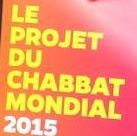
Published
8 years agoon
By
adminANT KATZ
While building and cementing ties with other Diaspora communities, SA’s chief rabbi took the opportunity to drum up support for the 2016 Shabbos Project across Europe, meeting with community leaders, volunteers and school learners in three major capital cities.
Rabbi Goldstein attended the two-day Paris conference of 80-odd senior French rabbinical leaders at the invitation of the Chief Rabbi of France, Rabbi Haim Korsia.
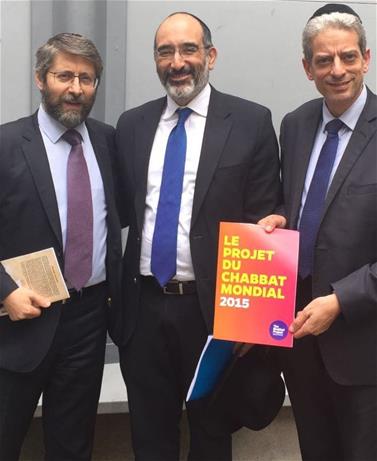 In his address, Rabbi Goldstein delivered a presentation on the SA-initiated Shabbos Project, which last year reached communities in 918 cities (including more than 30 in France).
In his address, Rabbi Goldstein delivered a presentation on the SA-initiated Shabbos Project, which last year reached communities in 918 cities (including more than 30 in France).
RIGHT: Rabbi Goldstein with the Chief Rabbi of France, Rabbi Haim Korsia (left) and his special adviser Moche Lewin
France has the world’s second-largest Diaspora Jewish population after the United States.
Rabbi Goldstein also met with Rabbi Laurent Berros, Chief Rabbi of Sarcelles, where all 27 of the city’s shuls embraced the Shabbos Project in 2015. “Many families kept Shabbat for the first time,” Rabbi Goldstein told SAJR – which is the objective of the project.
The day before the conference, Rabbi Goldstein visited two prominent Jewish schools in Paris, – Pavillon Sous Bois and Lucien de Hirsch – engaging with teachers and pupils.
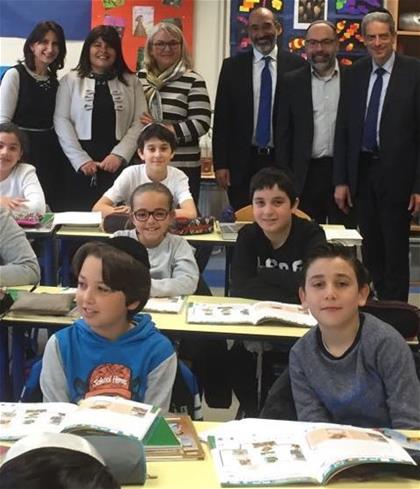
LEFT: The Chief Rabbi at the Alliance Pavillons Sous Bois school in Paris
Paul Fitoussi, principal of Lucien is emerging as a key Shabbos Project partner in France. Fitoussi is a past-president of the organisation of France’s 130 Jewish schools.
Moché Lewin, executive director of the Conference of European Rabbis and a driving force behind the Shabbos Project in Europe, arranged a meeting with representatives from Crif, the umbrella group that represents France’s Jewish organisations.
Rabbi Goldstein found enormous support in France for the Shabbos Project. “Many community leaders see it as a way to bring chizuk https://www.sajr.co.za/images/default-source/places/world/chief16-2.jpg” class=”sfImageWrapper”>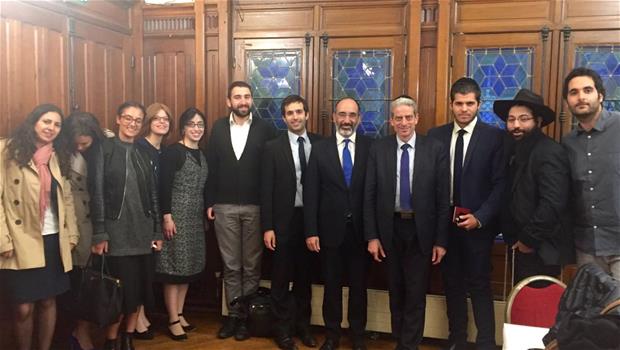
ABOVE: Rabbi Goldstein with the Paris Shabbos Project Committee
At the end of the French leg he was interviewed on national radio through an interpreter. It was the first time he hadn’t spoken in Hebrew.
“At the conference, in the school classrooms, wherever I went, I spoke in Hebrew. It was a powerful reminder that whatever separates us, whether it’s language or culture or national identity, the fact that we are Jewish overcomes these differences.”
He was struck when he saw the kids learning the same lessons about Shavuot that SA’s Jewish kids do, singing the same Shabbat songs. “It shows that what holds us together is our Torah,” he says.
Vienna comes to the boil
In Vienna, with a Jewish population of 7 000, he was guest speaker at the Biennial Conference which brings together chief rabbis and Torah leaders from across Europe.
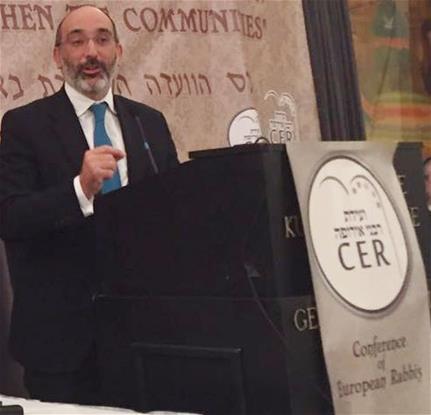
LEFT: Rabbi Goldstein was also an honorary guest speaker in Vienna at the Conference of European Rabbis
After participating in general discussions around security and political issues facing European Jewry, Rabbi Goldstein talked on the Shabbos Project and met privately with rabbinical leaders.
Everyone is aware of the Shabbos Project, says Rabbi Goldstein. “Across Europe – from Dusseldorf to Kiev, Manchester to Brussels, Istanbul to Odessa, Toulouse to Geneva,” leaders are redoubling efforts to ensure that the 2016 Shabbos Project “has a truly seismic impact on their communities”.
Peter Winter, the Shabbos Project’s lead co-ordinator in Vienna, said: “This is a unique opportunity to unite across different backgrounds, outlooks, ages, and levels of observance, and it’s an opportunity we in Vienna have embraced.”
Swiss clockwork
The chief rabbi’s last European stopover was in Zurich. “During last year’s Shabbos Project, thanks to an extremely well-organised unit of passionate volunteers,” he says, the Swiss city emerged as one of Europe’s leading lights.
It was run like clockwork – driven by a steering committee, which oversees eight sub-committees, each with its own portfolio, responsible for organising events and targeting specific audiences.
“The purpose of the visit was to meet up with the more than 50 volunteers who make up the team to discover how they managed to galvanise the Zurich community in 2015,” Rabbi Goldstein said.
“What’s incredible here is that this army of volunteers come from all walks of life – young and old, observant and not.” Whatever their background, they are all deeply passionate and committed to the ideals of the project, to ensure the initiative is a success.
Dinah Taus, a Zurich steering committee member, says that “last year we banded together intent on creating something that would transcend our usual silos”. In the end, she says, it paid off. “Throughout last year’s event, there was an intimacy and sense of sharing that was difficult to describe.”
This phenomenon isn’t new to Rabbi Goldstein. He says he heard similar accounts on a recent trip to the US.
“Over the past two years, we’ve seen a vast and energetic social movement spring up, as people spontaneously have come forward to take ownership of the Shabbos Project and bring it to life,” says Rabbi Goldstein.
“It is these kinds of creative, passionate endeavours, both small-scale and large-scale, that make the Shabbos Project a real social movement – a grassroots project driven by the people for the people.”
